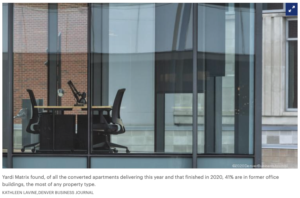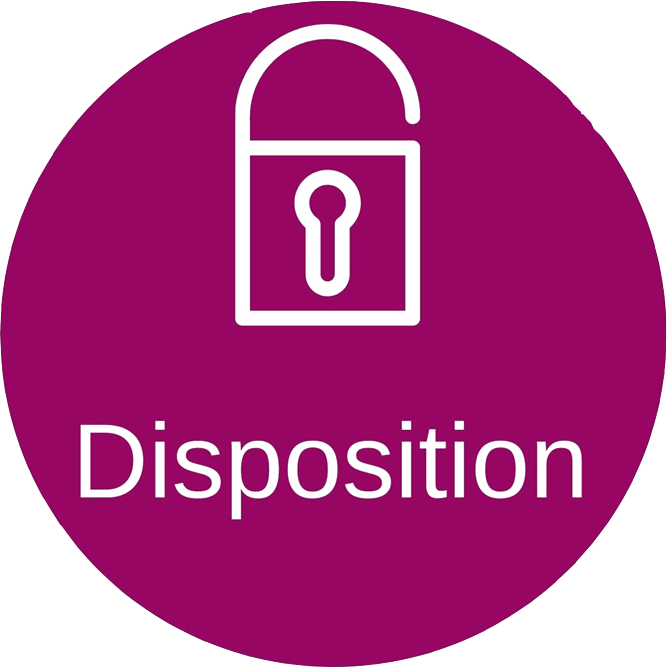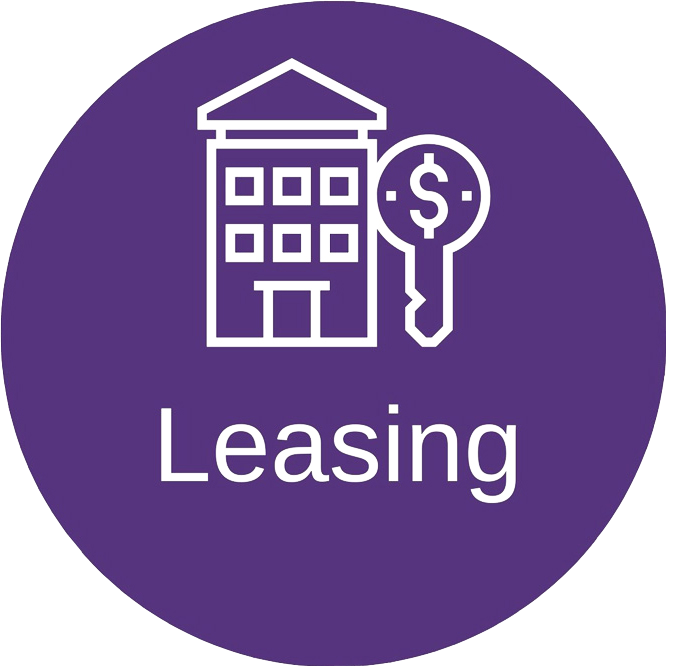
More than 20,000 apartment-conversion units are slated to deliver this year
More than 20,000 apartment-conversion units are slated to deliver this year
The Covid-19 pandemic didn’t invent the real estate conversion model. Buildings have been retrofitted into new uses for generations.
But it did, apparently, accelerate the popularity of the model, especially conversions into apartments. A recent report by RentCafe and commercial real estate data company Yardi Matrix found more than 20,100 apartment-conversion units are to be finalized in 2021, which is a record.
Yardi Matrix found, of all the converted apartments delivering this year and that finished in 2020, 41% are in former office buildings, the most of any property type.
It’s a more challenging, and expensive, conversion project but one that’s increased in popularity since the pandemic.
Steven Paynter, office buildings leader and principal at San Francisco-based design and architecture firm Gensler, said the firm started getting a lot more requests for office-to-apartment conversions last year. In response, he developed an algorithm to help determine whether an office property can feasibly be retrofitted into apartments
The algorithm, which has since been applied to more than 100 office buildings, found some 60% of office buildings are poor candidates for conversions into residential, Paynter said. Floorplate size, core-to-window depth, elevator accessibility, parking, building envelope and myriad other factors are used to determine how many units an owner could feasibly create in an office building.
Paynter said, generally speaking, office buildings dating back to the 1960s and 1970s, when floorplate sizes were smaller and contained more shallow footprints, are the most ideal buildings for conversion into housing. Buildings from the 1980s and 1990s tend to have much larger floorplates in comparison.
Historically, developers would pursue office-to-residential conversions in markets that saw a sudden surge in vacancy, likely from a major company or industry shuttering offices. Payner said several office buildings in markets like Detroit, Houston and Kansas City underwent conversions in years past.
Yardi Matrix found the top cities seeing office-to-apartment conversions in 2021 are:
- Washington, D.C., with 1,091 units
- Chicago, with 1,020 units
- Alexandria, Virginia, with 955 units
- Los Angeles, with 904 units
- Cleveland, with 652 units
- Philadelphia, with 591 units
- Honolulu, with 571 units
- Nashville, Tennessee, with 458 units
- Union, New Jersey, with 415 units
- Hyattsville, Maryland, with 338 units
It’s becoming less geographically concentrated and widely adopted today, as more cities struggle with their office markets, Paynter said. He added office conversion projects will likely continue to be popular going forward.
“We are seeing, and the reason why I think (this) will accelerate, that the Class C buildings aren’t sustainable or successful,” Payner continued.
It builds on the flight-to-quality theme being observed across the U.S. Especially since the current global health crisis, tenants are choosing spaces with the best HVAC and other systems. Additionally, climate change is spurring decisionmakers to place new precedence on sustainability, including in their corporate real estate.
A lot of companies today are opting for new office buildings and, as a result, vacating dated buildings in droves.
Beyond office buildings, Paynter said he’s seen some pursue conversions of struggling shopping malls into residential, but those are more bespoke and less common than other types of commercial properties.
The hotel conversion model took off last year, when the hospitality industry — even more than other real estate sectors — was battered after the pandemic hit.
There are a little more than 8,000 hotel rooms in the pipeline slated for adaptive reuse in 2022 and beyond, according to Yardi Matrix. Not all of those may come to fruition. That figure reflects projects currently under conversion scheduled to be completed in 2022 or later, and projects still in the approval process or in planning stages.
Eddy O’Brien, co-founder and managing partner at Charleston, South Carolina-based Blaze Partners LLC, said the firm started pursuing the hotel-to-multifamily conversion model in 2020. There was a brief window last year when hotels, particularly extended-stay properties, could be snapped up at a discount to be retrofitted into apartments.
Today, with more people even simply exploring those types of deals, sellers’ expectations have changed, O’Brien said. That may have some groups exiting the space but Blaze see it as a continued opportunity.
“To us, this space was not in response to a tactical, short-term aberration in pricing,” O’Brien said. “It was tied much more closely to the longer-term affordability trends.”
Blaze typically tries to deliver units at a upfitted property, which can take anywhere from three to nine months to complete, at rates that are $300 to $400 less than comparable rents in a particular submarket.
Because specific characteristics are needed for a conversion to be successful, Blaze has more recently been pursuing non-extended-stay hotels, which O’Brien said require more of a redevelopment than a repositioning, and other commercial property types.
Today, Blaze has six hotels it’s converted, or is currently converting, into apartments, with another dozen in the pipeline.
“There will always be real estate that is no longer in vogue and is no longer the highest and best use,” O’Brien said. “Anytime that that exists — and affordability remains an issue — then, I think, groups that take that creative approach can certainly look at that kind of real estate and see paths forward.”




